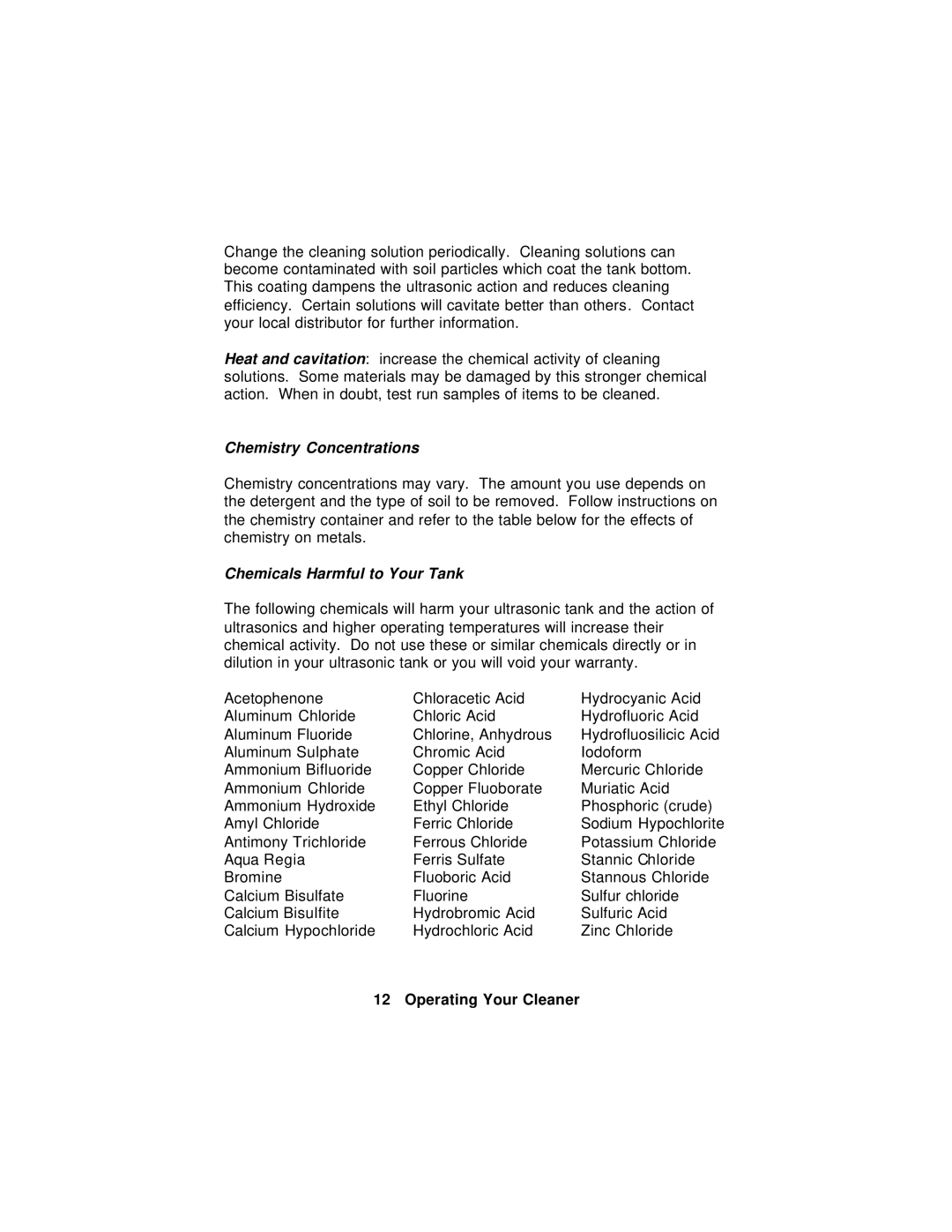Change the cleaning solution periodically. Cleaning solutions can become contaminated with soil particles which coat the tank bottom. This coating dampens the ultrasonic action and reduces cleaning efficiency. Certain solutions will cavitate better than others. Contact your local distributor for further information.
Heat and cavitation: increase the chemical activity of cleaning solutions. Some materials may be damaged by this stronger chemical action. When in doubt, test run samples of items to be cleaned.
Chemistry Concentrations
Chemistry concentrations may vary. The amount you use depends on the detergent and the type of soil to be removed. Follow instructions on the chemistry container and refer to the table below for the effects of chemistry on metals.
Chemicals Harmful to Your Tank
The following chemicals will harm your ultrasonic tank and the action of ultrasonics and higher operating temperatures will increase their chemical activity. Do not use these or similar chemicals directly or in dilution in your ultrasonic tank or you will void your warranty.
Acetophenone | Chloracetic Acid | Hydrocyanic Acid |
Aluminum Chloride | Chloric Acid | Hydrofluoric Acid |
Aluminum Fluoride | Chlorine, Anhydrous | Hydrofluosilicic Acid |
Aluminum Sulphate | Chromic Acid | Iodoform |
Ammonium Bifluoride | Copper Chloride | Mercuric Chloride |
Ammonium Chloride | Copper Fluoborate | Muriatic Acid |
Ammonium Hydroxide | Ethyl Chloride | Phosphoric (crude) |
Amyl Chloride | Ferric Chloride | Sodium Hypochlorite |
Antimony Trichloride | Ferrous Chloride | Potassium Chloride |
Aqua Regia | Ferris Sulfate | Stannic Chloride |
Bromine | Fluoboric Acid | Stannous Chloride |
Calcium Bisulfate | Fluorine | Sulfur chloride |
Calcium Bisulfite | Hydrobromic Acid | Sulfuric Acid |
Calcium Hypochloride | Hydrochloric Acid | Zinc Chloride |
12 Operating Your Cleaner
